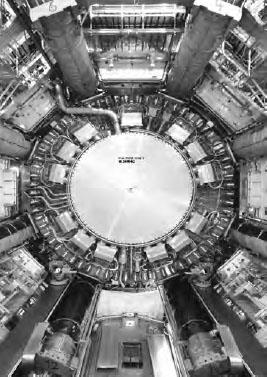Unanswered QuestionsBeyond the Proton, Neutron, and Electron |
How are particles accelerated to very high energies? |
The two highest energy particle accelerators are the Tevatron at Fermilab, near Chicago, and the Large Hadron Collider (LHC) at CERN (European Organization for Nuclear Research) near Geneva, Switzerland. Both machines accelerate and store protons moving in circular paths in a metallic tube, called the beam line, from which all but minute amounts of air have been evacuated. Beams of particles circulate through the tube in both the clockwise and counter-clockwise direction. The beams intersect at several places around the circle so that the particles can collide head-on. Many superconducting magnets bend the paths of the particles into the circle while other magnets focus the particles into small beams. Electric fields created in high-power vacuum tubes provide the accelerating forces on the particles.
In particle accelerators energies are measured in electron volts (eV). One eV is the energy a particle obtains by being accelerated by a 1 volt potential difference. Modern accelerators give particles energies of hundreds of MeV (mega electron volts) or GeV (billions of electron volts). The Tevatron creates collisions between protons and antiprotons, each giving an energy of almost 1,000 GeV resulting in an energy of 2 GeV when the two beams collide. In the LHC both beams are protons. The design energy is 7 GeV in each beam for a total collision energy of 14 GeV.

